Place: Ely, Cambridgeshire, UK
Date: 14th April 2006
Ely derives its name from Eel(y), a place where a lot of eels were to be found. And Eely is by no way an island now; it was once, until the 17th century, after which they completely drained the water from the low-lying fenlands. This place also has one of the largest cathedrals in UK. The above facts are what that made it interesting for me to visit this place.
My first view of the magnificent cathedral.
A sundial or shadow clock. This is the first one I’m seeing on a wall. The time shown is around 11:50 AM (almost 12 Noon), quite accurate. The photo was taken at 11:53 AM GMT, 12:53 PM BST (British standard time). Yes, they shifted the time by one hour through Europe on March 26th 2006. I would like to see them shift the time shown in this sundial. 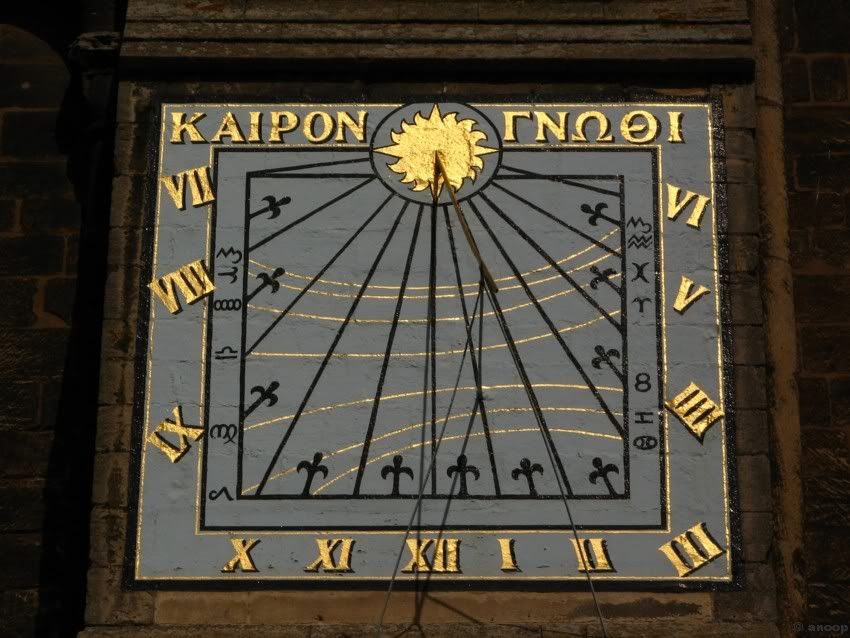
The motto in Greek above the dial face means, “Know the (appropriate) time” or “Choose the timely moment”. The dial face declines slightly west, so more afternoon hours than morning hours are marked.
side view of the cathedral

Had been inside the cathedral; unfortunately, was not able to use my camera inside as the cathedral service was in progress. Here’s a link to how the inside of the cathedral looks like. Inside Ely Cathedral. The attractive painted ceiling of the nave is worth noting.
Fenland River cruises
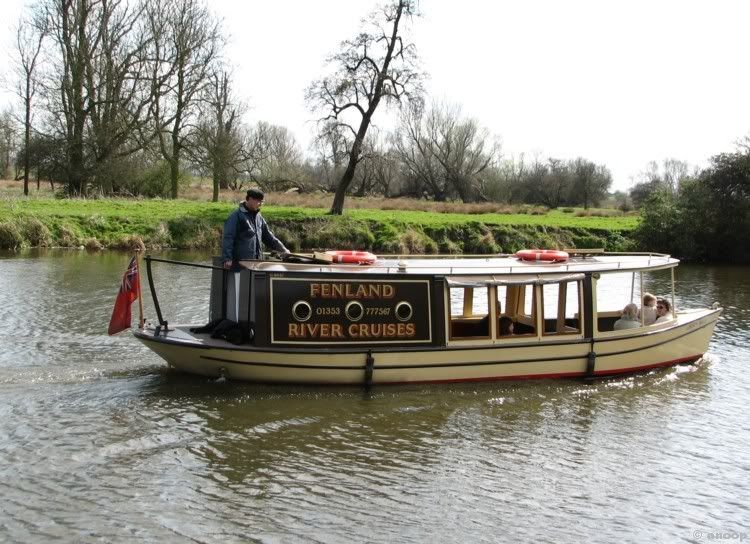
Took this 30 min cruise on the River “Great Ouse”.
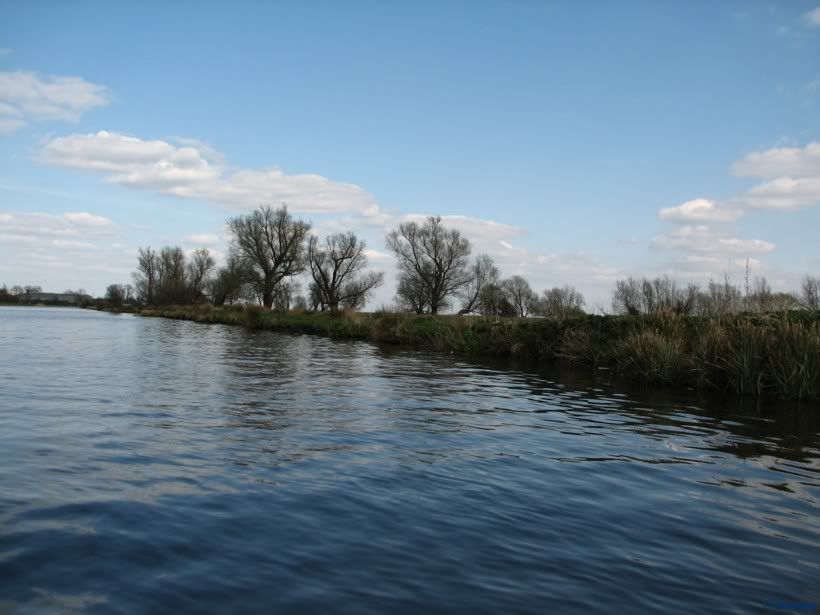
The snap is an indication of the lovely climate that day. As good a day as any that I have seen since being here.
Ship of the Fens
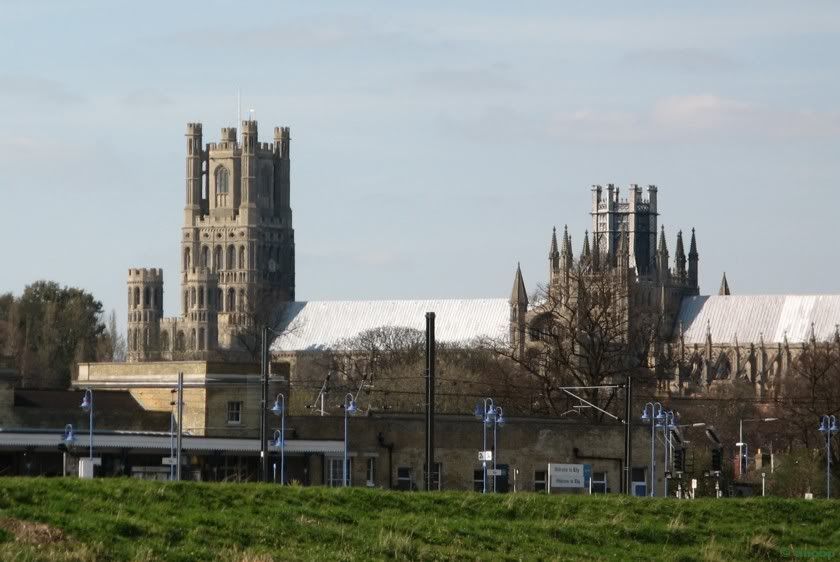
The cathedral is called the “Ship of the fens” very aptly. Even now, when I travel via Ely, I can see this cathedral for miles. Just imagine how it might be when the surrounding lands were covered with water and seeing this mammoth cathedral in the distance. It would have made an excellent sight.
The story of the Fens:
The history of Fens is an interesting one, where man and nature have fought each other to create the Fens environment of today. It’s an amazing transition from the wetland wilderness of old to the people made landscape of today.
It all started 10,000 years ago, after the ice age, England was joined to Europe and Fenland Rivers flowed into the Rhine. As the ice melted the sea rose and the land dropped 30 metres in a seesawing settling movement, which created the landscape of today.
5000 years ago forest inland became marsh, sometimes covered by sea, which left a layer of clay, and sometimes by rivers, which turned decaying vegetation into peat (Partially carbonized vegetable matter saturated with water; can be used as a fuel when dried). Higher land became islands; Ely stands on one of those islands, the largest one in fact.
By 50 AD when Britain was under Roman rule, the silt lands were embanked to keep out the sea and Inland Rivers, yielding rich crops. This piecemeal drainage created problems downstream – the sluggish, tidal rivers were held back by silted outfalls causing flooding and frustrating navigation.
In 1650 AD large scale draining of the peat-lands began. Dutch engineers designed long straight cuts to take the water to the sea faster, and sluices were installed to stop tides running far inland. Success was short lived. Drained of water and eaten by bacteria, the peat shrunk. The more effectively it was drained the more it shrunk – the fields were lower than the rivers and there was no ‘fall’ for the rivers to run to sea. Within 50 years land was drowned once more.
Attempts were made to drain the Fens again using pumps. Wind pumps made the land just habitable but were unreliable. It was the introduction of steam driven pumps, in 1820’s, that really made the difference. The Fens were drained at last!
Draining the Fens has taken man two thousand years, but the challenges involved in keeping them dry – of peat shrinkage, siltation, tidal surges and sea level change – are as real as ever.
Ely Museum:
There were many things on exhibit in this museum; I don’t know why these particular scenes caught my attention.
The Debtors cell – this reconstruction is based from April 1769
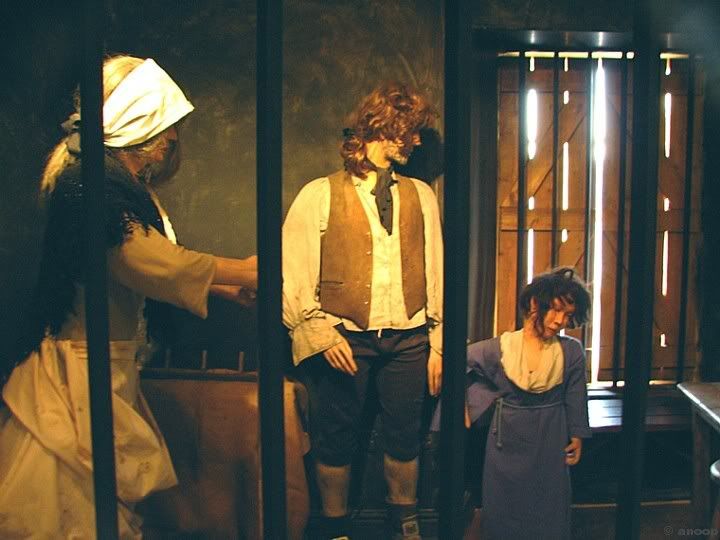 Scene – William Banham, aged 29, a farmer from Coveney, has been sentenced to stay in Gaol until his debt of £ 5 due to John Lankester has been paid. As he struggles to find ways of making payment his wife and children have been allowed a visit. The little boy has cried himself to sleep in bed (not in scene), his sister stands holding her fathers hand as mother tearfully tries to clean up the cell. William has been trying to work out ways of paying his debt, which now includes the mounting costs of eating and sleeping in the Gaol.
Scene – William Banham, aged 29, a farmer from Coveney, has been sentenced to stay in Gaol until his debt of £ 5 due to John Lankester has been paid. As he struggles to find ways of making payment his wife and children have been allowed a visit. The little boy has cried himself to sleep in bed (not in scene), his sister stands holding her fathers hand as mother tearfully tries to clean up the cell. William has been trying to work out ways of paying his debt, which now includes the mounting costs of eating and sleeping in the Gaol.
The Condemned cell – shows a reconstruction from 18th century
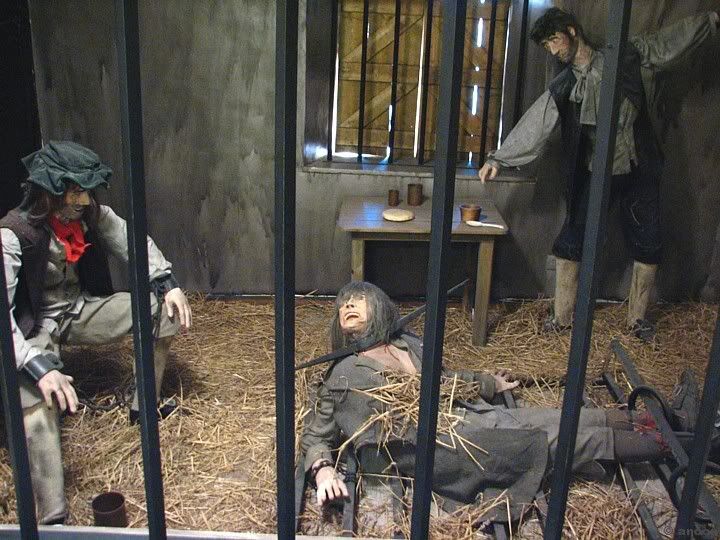 Scene – Christian Harrison sentenced to be transported to Botany Bay, Australia for 14 years. He sits thinking about the length of time he will be separated from his family and the terrifying journey to the other side of the world. Edward Freeman, convicted of rape, he stands chained to the wall, waiting to be hanged next day. James Thompson, sentenced to hang for stealing a horse, has made several desperate attempts to escape. To prevent him trying again the gaoler has fixed a spiked iron collar to his neck and chained him to bars on the floor.
Scene – Christian Harrison sentenced to be transported to Botany Bay, Australia for 14 years. He sits thinking about the length of time he will be separated from his family and the terrifying journey to the other side of the world. Edward Freeman, convicted of rape, he stands chained to the wall, waiting to be hanged next day. James Thompson, sentenced to hang for stealing a horse, has made several desperate attempts to escape. To prevent him trying again the gaoler has fixed a spiked iron collar to his neck and chained him to bars on the floor.
Cathedral West Tower, all 215 feet of it
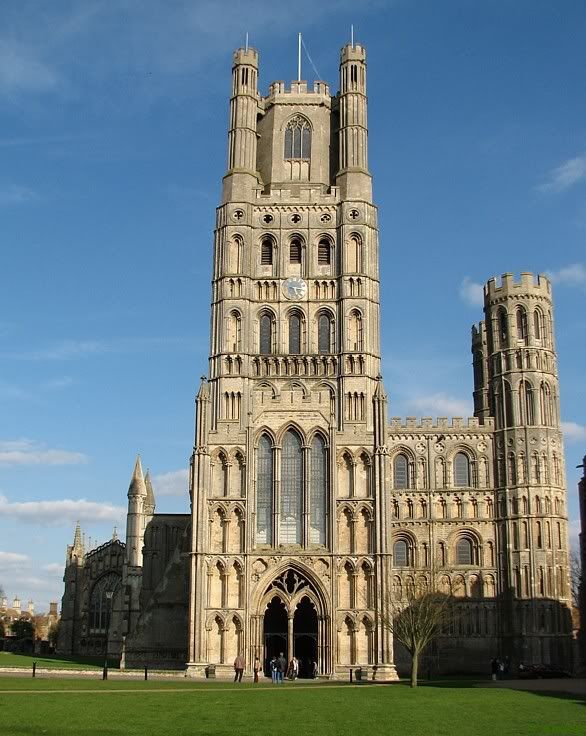
Hi,Just came across your blog…Excellent pictures 🙂Vikram
thanks vikram, even you have nice snaps in ur photo-blog.
awesome snaps…. tooo kewl